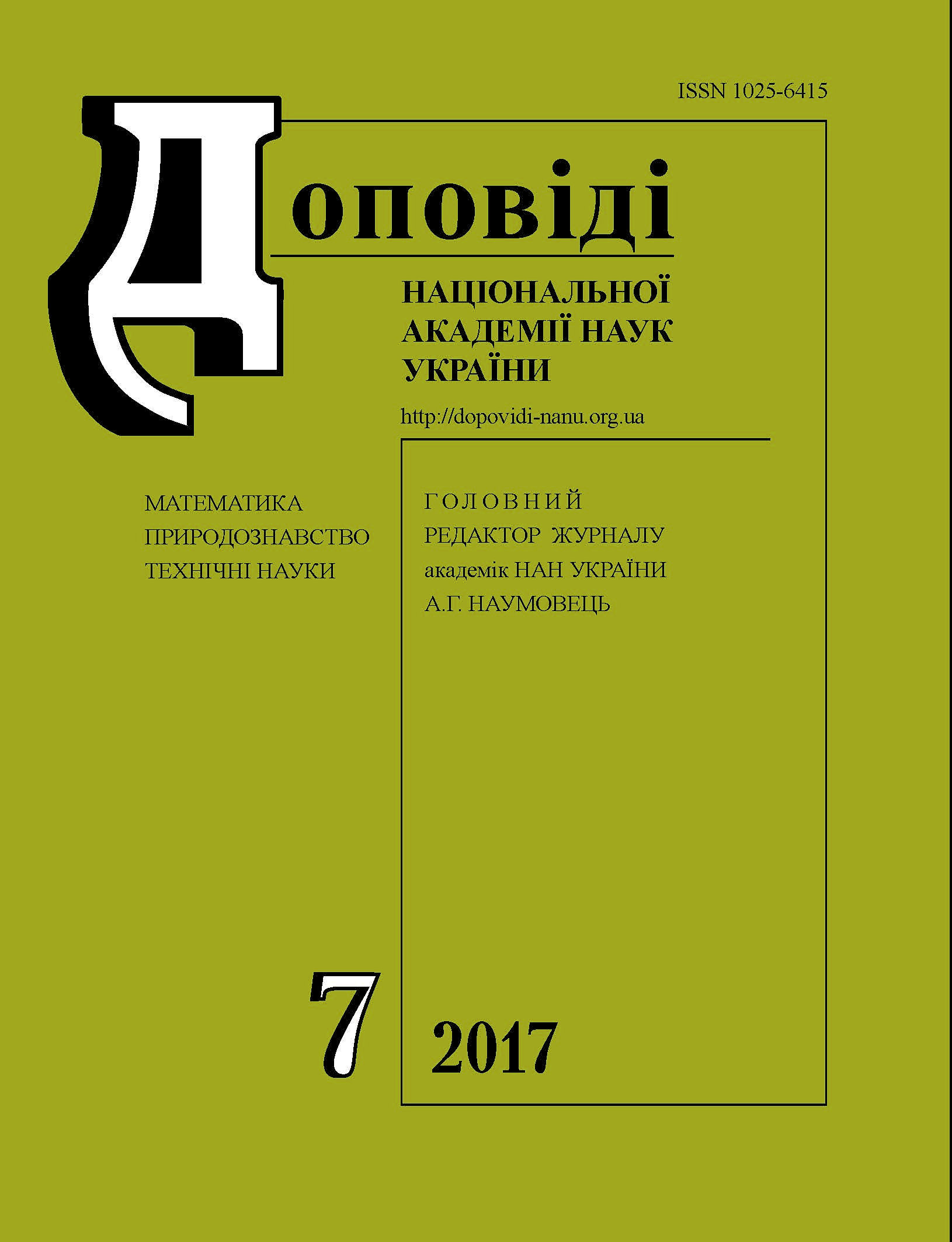Adaptive strategy of halophytic plants Polygonum maritimum and Euphorbia paralias
DOI:
https://doi.org/10.15407/dopovidi2017.07.098Keywords:
Euphorbia paralias L., lipids, microstructure, photosynthetic pigments, phytohormones, Polygonum maritimum L.Abstract
The leaf surface microstructure, pigments spectrum, phytohormones content, and lipids composition of halophytes with various metabolic and physiological strategies of adaptation to salinity of Polygonum maritimum L. and Euphorbia paralias L. grown under natural conditions on dunes of the Pomorie Lake (Bulgaria) are compared. P. maritimum stomata are located on the leaf both sides below the cuticle level, whereas, in E. raralias, stomata are present only on the abaxial side, and they are surrounded with hump-shaped cuticle constructions. A high amount of carotenoids (as compared with chlorophylls) in P. maritimum leaves indicates that these pigments have a light-collecting function and could transfer an additional energy to chlorophylls. In leaves of E. paralias and P. maritimum, free abscisic acid and conjugated indole-3-acetic acid prevailed. The inactive cytokinins (cis-zeatin and zeatin-O-glucoside) dominated in E. paralias leaves, whereas P. maritimum leaves contained a significant quantity of isopentenyl-type cytokinins. The presence of a large amount of saturated fatty acids provides a decrease of membrane permeability and better resistance against soil salinity. It is concluded that the ecological strategy of halophytes involves the complex of structural and functional adaptations and determines a successful existence under salinity conditions.
Downloads
References
Ashraf, M. & Harris, P. J. C. (2013). Photosynthesis under stressful environments: An overview. Photosynthetica, 51, pp. 163-190. https://doi.org/10.1007/s11099-013-0021-6
Stetsenko, L. A., Vedenicheva, N. P., Likhnevsky, R. V. & Kuznetsov, Vl.V. (2015). Influence of abscisic acid and fluridone on the content of phytohormones and polyamines and the level of oxidative stress in plants of Mesembryanthemum crystallinum L. under salinity. Biol. Bull., 42, pp. 98-107. https://doi.org/10.1134/S1062359015020107
Ivanova, A., Khozin-Goldberg, I., Kamenarska, Z., Nechev, J., Cohen, Z., Popov, S. & Stefanov, K. (2003). Lipophylic compounds from Euphorbia peplis L. — a halophytic plant from the Bulgarian Black Sea coast. Z. Naturforsch., 58, pp. 783-788. https://doi.org/10.1515/znc-2003-11-1205
Wellburn, A. J. (1994). The spectral determination of chlorophyll a and chlorophyll b, as well as total carotenoids, using various solvents with spectrophotometers of different resolution. Plant Physiol., 144, pp. 307-313. https://doi.org/10.1016/S0176-1617(11)81192-2
Christie, W. W. (1989). Gas Chromatography and Lipids: a Practical Guide. Ayr, Scotland: Oily Press.
Musatenko, L., Vedenicheva, N., Vasyuk, V., Generalova, V., Martyn, G. & Sytnik, K. (2003). Phytohormones
in seedlings of maize hybrids differing in their tolerance to high temperatures. Russ. J. Plant Physiol., 50, pp. 499-504. doi: https://doi.org/10.1023/A:1024704303406
Evert, R. F., Eichhorn, S. E. & Raven, P. H. (2013). Raven Biology of Plants. 8 ed. New York: Freeman.
Ivanova, A. P., Tsonev, T. D., Peeva, V. N., Najdenski, H. M., Tsvetkova, I. V., Babenko, L. M., Shcherbatiuk, M.M., Sheiko, O. A. & Kosakivska, I. V. (2015). Euhalophyte Eryngium maritimum L.: the microstructure and functional characteristics. J. Stress Physiol. Biochem., 11, pp. 52-61.
Babenko, L. M., Kosakivska, I. V., Akimov, Yu. A., Klymchuk, D. O. & Skaternaya, T. D. (2014). Effect of temperature stresses on pigment sontent, lipoxygenase activity and cell ultrastructure of winter wheat seedlings. Genetics and Plant Physiol., 4, pp. 117-125.
Nisar, N., Li, L., Lu, Sh., Khin, N. C. & Pogson, B. J. (2015). Carotenoid metabolism in plants. Mol. Plant, 8, pp. 68-82. https://doi.org/10.1016/j.molp.2014.12.007
Xiong, L. (2007). Abscisic acid in plant response and adaptation to drought and salt stress. In Advances in molecular breeding toward drought and salt tolerant crops (pp. 193-221). Berlin: Springer. https://doi.org/10.1007/978-1-4020-5578-2_9
Vedenicheva, N. P., Voytenko, L. V., Musatenko, L. I., Stetsenko, L. A. & Sheviakova, N. I. (2011). Changes of phytohormones content in halo- and glycophytes under salinity. Studia Biol., 5, pp. 37-44.
Talla, S. K., Panigrahy, M., Kappara, S., Nirosha, P. & Neelamraju, S. (2016). Cytokinin delays dark-induced senescence in rice by maintaining the chlorophyll cycle and photosynthetic complexes. J. Exp. Bot., 67, pp. 1839-1851. https://doi.org/10.1093/jxb/erv575
Mansour, M. M. F., Salama, K. A. & Al-Mutawa, M. M. (2002). Effects of NaCl and polyamines on plasma membrane lipids of wheat roots. Biol. Plant., 45, pp. 235-239. https://doi.org/10.1023/A:1015144607333
Rodriguez-Rosales, M. P., Kerbek, L. & Bueno, P. (1999). Changes induced by NaCl in lipid content and composition, lipoxygenase, plasma membrane H+–ATPase and antioxidant enzyme activities of tomato (Lycopersicon esculentum Mill) calli. Plant Sci., 143, pp. 143-150. https://doi.org/10.1016/S0168-9452(99)00046-1
Downloads
Published
How to Cite
Issue
Section
License
Copyright (c) 2024 Reports of the National Academy of Sciences of Ukraine

This work is licensed under a Creative Commons Attribution-NonCommercial 4.0 International License.



